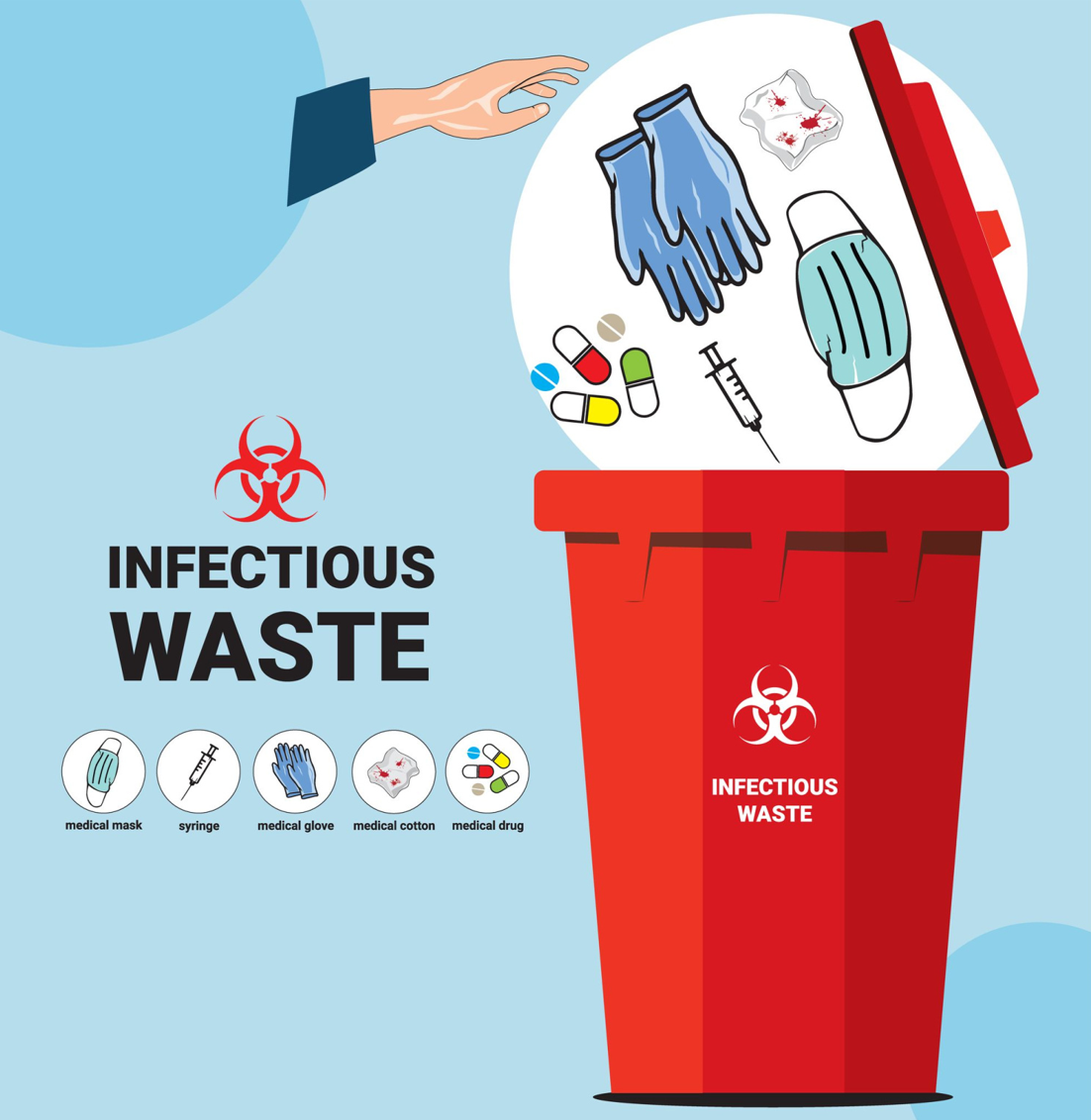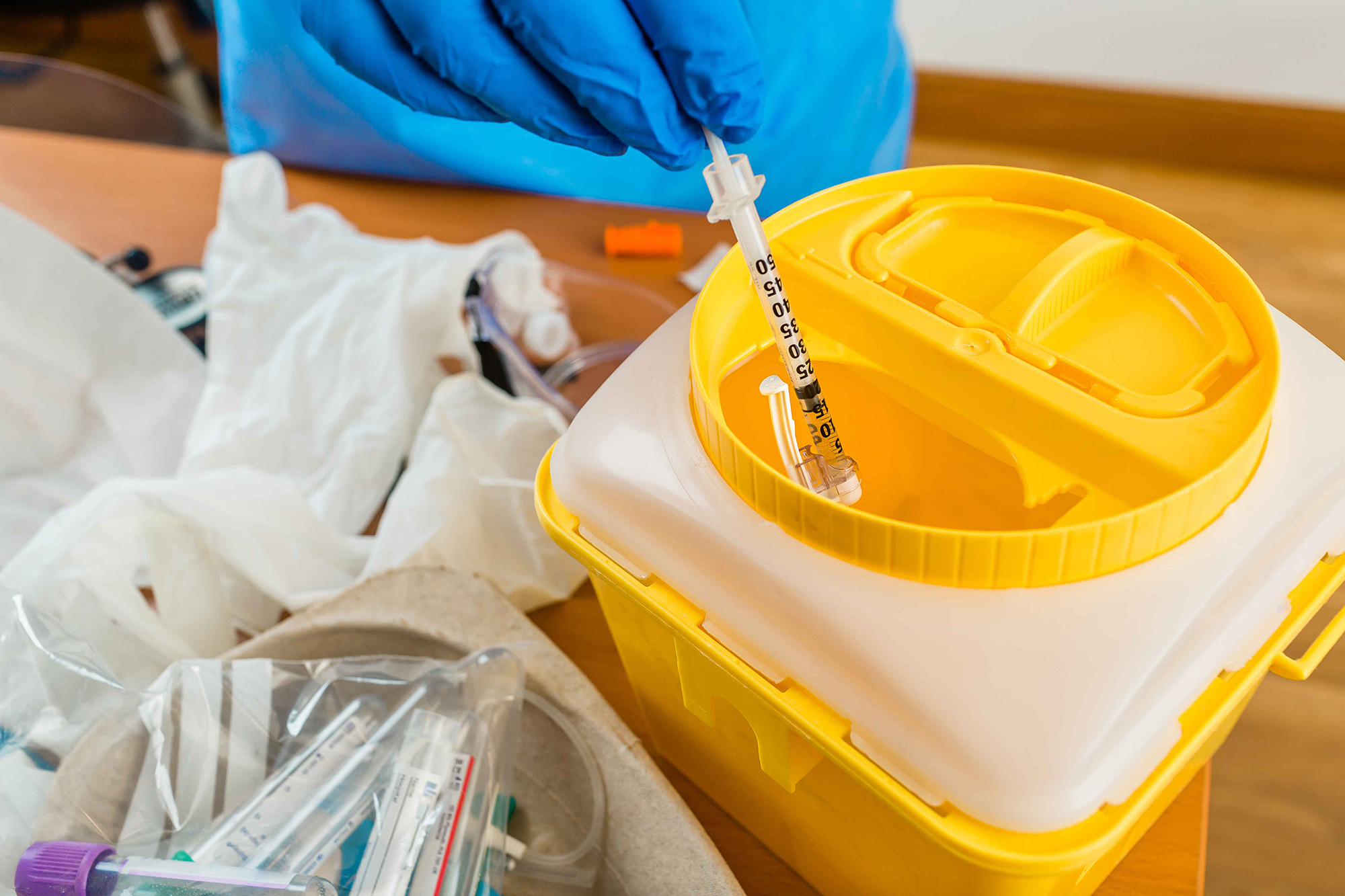Strategic Medical Waste Disposal Solutions: Supporting Safety and Sustainability
Finest Practices for Medical Waste Administration
Medical waste administration is a critical element of healthcare facilities' procedures to make sure the safety and security of individuals, personnel, and the atmosphere. Carrying out ideal practices in medical waste monitoring is essential to decrease the dangers connected with harmful waste. This consists of appropriate segregation and categorization of waste, ensuring its risk-free storage space and labeling, sticking to regulative guidelines, and using reliable disposal approaches. By following these finest techniques, medical care facilities can decrease the capacity for infections, injuries, and pollution caused by incorrect handling and disposal of clinical waste. This introduction aims to provide an overview of the value of ideal methods for medical waste administration and the subsequent areas will certainly explore each technique carefully - medical waste disposal service.

Partition and Categorization
In the area of clinical waste administration, appropriate segregation and classification are necessary methods for making certain the risk-free and effective disposal of healthcare-related materials. Clinical waste is created from various sources, consisting of hospitals, centers, labs, and various other health care facilities. It includes a large range of items, such as needles, syringes, plasters, handwear covers, and pharmaceutical waste.
Partition includes the methodical separation of various kinds of medical waste based upon their characteristics and potential threats. This process assists to prevent cross-contamination and guarantees that each kind of waste is taken care of appropriately. Sharps waste, such as blades and needles, should be put in puncture-resistant containers to stop injuries and the spread of transmittable illness. In a similar way, contagious waste, such as blood-soaked plasters or societies, need to be segregated and dealt with individually to lessen the danger of spreading out pathogens.
Classification is the process of categorizing clinical waste right into different groups based on its prospective dangers. These classifications may consist of contagious waste, harmful waste, pharmaceutical waste, and basic waste. By classifying waste, medical care centers can figure out the appropriate disposal approaches and guarantee conformity with neighborhood policies and guidelines.
Proper partition and classification of clinical waste not just shield the health and wellness and safety of health care workers and the public however also contribute to the general performance and performance of waste administration. It decreases the risk of crashes, reduces ecological influences, and advertises liable garbage disposal practices.
Appropriate Storage and Identifying
To make certain the effective and risk-free disposal of clinical waste, healthcare facilities must stick to correct storage and labeling practices. WasteX Medical Waste Disposal. Proper storage and labeling play a crucial role in keeping the stability of medical waste management systems and securing the health and wellness of health care workers, people, and the public
When it involves storage, it is essential to have actually marked areas especially developed for various sorts of medical waste. These locations should be protected, well-ventilated, and outfitted with appropriate containers that meet regulatory criteria (medical waste disposal). Partition and classification of waste ought to also be thought about to stay clear of cross-contamination and possible threats

Regular surveillance and assessment of storage locations and containers are important to determine any problems or offenses. Team must be trained on proper storage space and labeling techniques, stressing the relevance of conformity with methods and guidelines.
Safe Transportation and Handling
Making certain the secure and appropriate transport and handling of clinical waste is crucial for keeping the honesty of waste administration systems and guarding the health and wellness of all included. Clinical waste, that includes things infected with contagious products, pharmaceuticals, and other harmful compounds, must be carried in a way that avoids leaks, spills, and potential contamination.
To achieve safe transport and handling, a number of finest practices need to be complied with. First, it is necessary to make use of leak-proof and puncture-resistant containers that are particularly developed for clinical waste. These containers ought to be appropriately secured and classified to avoid any type of accidental direct exposure or mishandling. Furthermore, waste must be segregated based on its nature and type to stop cross-contamination.
During transportation, it is very important to guarantee that waste containers are firmly fastened and saved in a steady manner. Automobiles utilized for carrying medical waste must be geared up with ideal safety and security attributes, such as spill control systems, to minimize the danger of any kind of spills or leaks. Motorists ought to receive training on appropriate handling and emergency situation feedback treatments to properly attend to any kind of unpredicted occurrences.
Furthermore, the transport and handling of clinical waste ought to follow all appropriate laws and standards set forth by local, state, and government authorities. WasteX Medical Waste Disposal. medical waste disposal service. Routine evaluations and audits must be performed to examine conformity and determine any kind of locations for enhancement
Compliance With Regulatory Standards
Preserving compliance with governing standards is vital for effective medical waste administration. These guidelines are put in location to protect public wellness and the setting by ensuring that clinical waste is correctly dealt with, treated, and disposed of. Conformity with regulatory standards aids to stop the spread of infectious conditions, minimize prospective risks, and decrease the total effect of clinical waste on the atmosphere.
To accomplish compliance, health care centers must stay notified concerning the particular regulations governing clinical waste management in their jurisdiction. These guidelines may differ from nation to country, and also within various states or areas. It is important for health care centers to have a thorough understanding of these guidelines and to carry out appropriate methods and protocols to guarantee compliance.
One key element of compliance is the proper partition and labeling of different kinds of clinical waste. This consists of dividing sharps from other waste, as well as categorizing waste based on its possible risks. Health care centers must additionally make certain that medical waste is kept in ideal containers which these containers are properly labeled and sealed.
Moreover, conformity with governing standards calls for health care facilities to establish proper training and education and learning programs for team member associated with clinical waste monitoring. This includes giving training on waste partition, dealing with, and disposal treatments, in addition to the appropriate usage of personal protective equipment.
Regular monitoring and audits are also important to ensure ongoing compliance with regulative standards. This involves performing normal assessments of waste click to read storage space areas, documenting waste administration treatments, and preserving documents of garbage disposal.
Reliable Disposal Approaches
Health care centers have to employ efficient disposal techniques for correct monitoring of clinical waste. Incorrect disposal of clinical waste can position serious health and ecological dangers. There are several techniques that can be made use of to efficiently deal with clinical waste, making sure the safety of healthcare workers, patients, and the basic public.
One typically utilized method is incineration. Incinerators can securely melt clinical waste at heats, reducing the volume and damaging any possibly unsafe microorganisms. Incineration can be pricey and may release hazardous contaminants into the air if not correctly managed.
An additional method is autoclaving, which entails subjecting the waste to high-pressure vapor. This process kills microorganisms, viruses, and other bacteria, making the waste safe for disposal in normal waste streams. Autoclaving is a effective and eco-friendly method, however it needs specialized tools and trained employees.
Chemical sanitation is additionally utilized in some cases, where liquid chemicals are applied to the waste to disinfect it. This approach is less typically used as a result of issues regarding the performance of chemical sanitation and the potential for chemical deposits to contaminate the setting.
In enhancement to these methods, healthcare facilities ought to likewise carry out correct partition, packaging, and labeling of medical waste to ensure its secure handling and disposal. Routine training and education of personnel on proper waste management practices are vital to maintaining effective disposal methods.
Conclusion
In final thought, applying ideal practices for clinical waste monitoring is necessary for making sure the safety of health care workers, clients, and the atmosphere. By appropriately setting apart and classifying waste, storing and labeling it correctly, making certain risk-free transportation and handling, following governing standards, and employing reliable disposal methods, medical care facilities can efficiently take care of and lessen the dangers connected with clinical waste. It is vital for medical care organizations to prioritize and stick to these finest methods to preserve a safe and sustainable medical care environment.
Clinical waste monitoring is a critical aspect of healthcare facilities' operations to ensure the safety and security of people, staff, and the setting. Carrying out best methods in clinical waste management is vital to lessen the threats associated with dangerous waste. These groups may include contagious waste, harmful waste, pharmaceutical waste, and general waste.In verdict, executing best methods for clinical waste administration is necessary for ensuring the safety of medical care workers, patients, and the atmosphere. By properly categorizing and segregating waste, saving and identifying it correctly, making sure secure transport and handling, complying with regulatory guidelines, and employing reliable disposal methods, health care centers can effectively take care of and reduce the risks connected with medical waste.